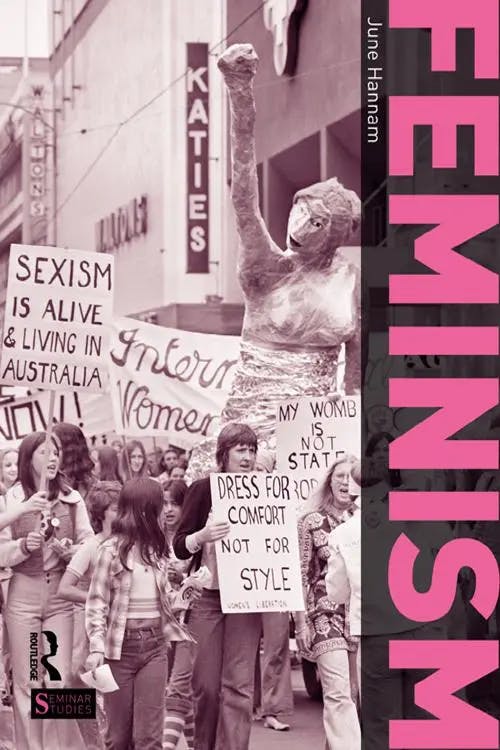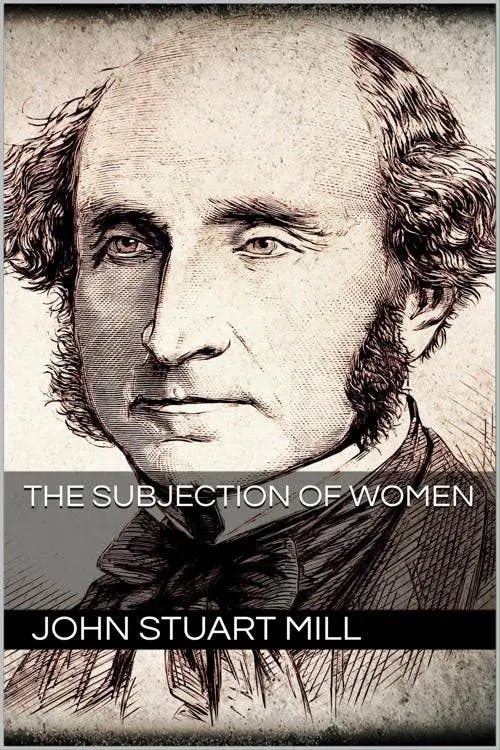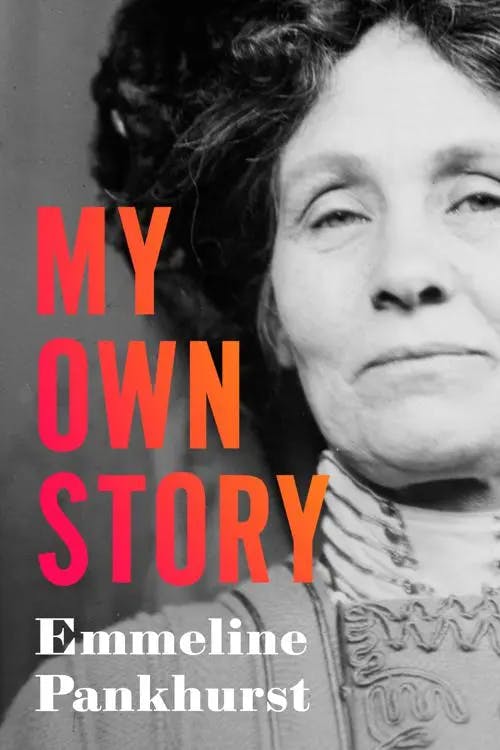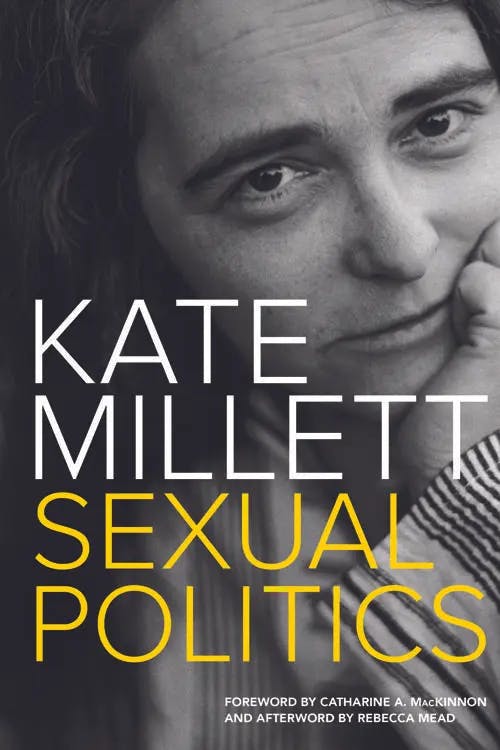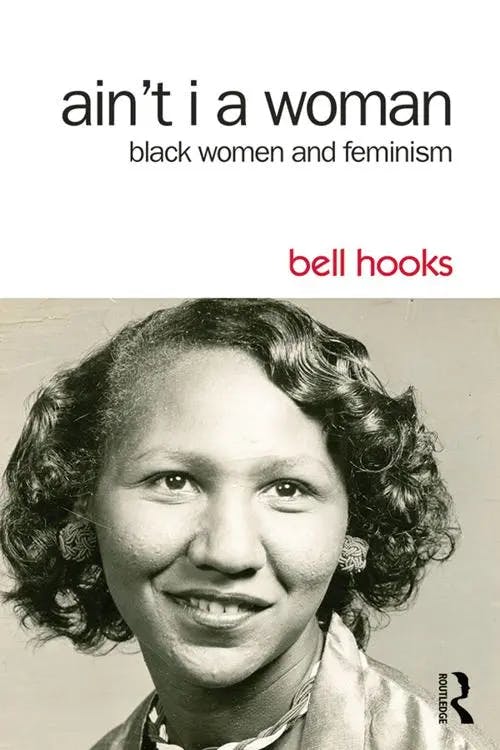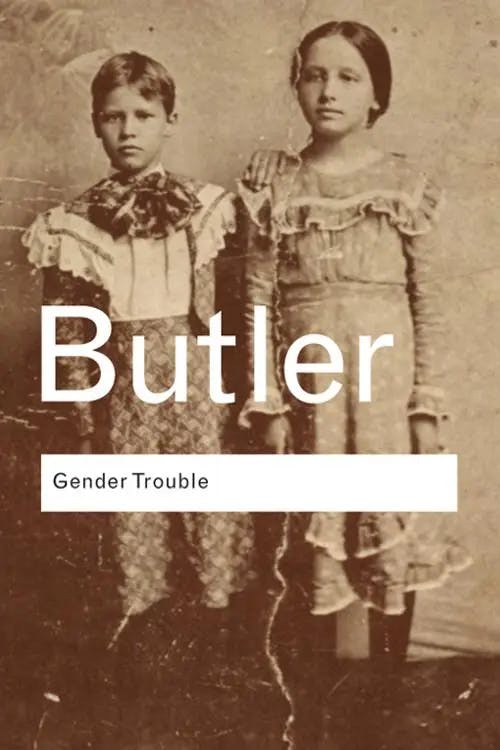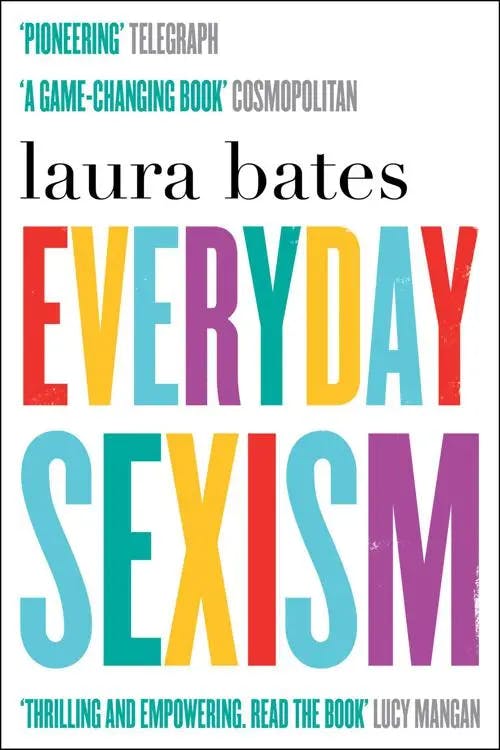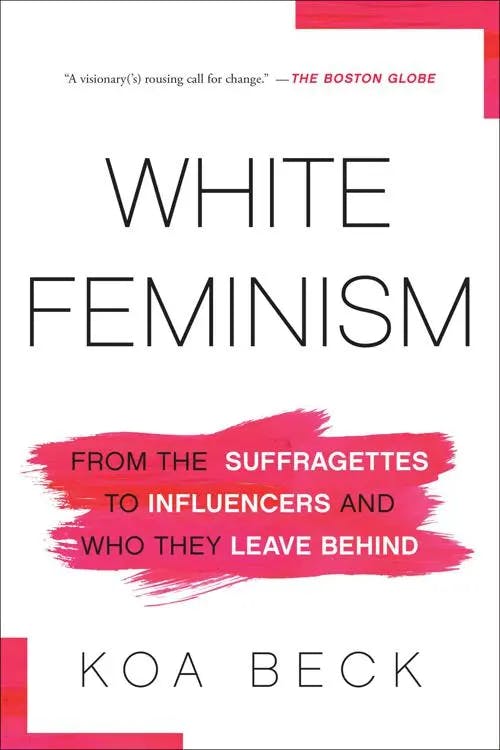Waves of Feminism - First to Fourth Wave Timeline
PhD, English Literature (Lancaster University)
Date Published: 14.03.2023,
Last Updated: 05.02.2024
Share this article
What are the waves of feminism?
Feminism is a socio-political movement that explores the political, economic and social inequality between the sexes. Feminists argue that, as patriarchal ideologies are embedded within society, inequality presents itself in all aspects of life; from the domestic space to politics to cultural representation. The aims of feminism have changed throughout the course of history in accordance with the most pressing issues impacting women — and as what it means to be a “woman” is reconsidered. As such, many see the history of feminism as being divided into distinct waves. The wave metaphor was first used in 1968 with the publication of the New York Times article ‘The Second Feminist Wave’ by Martha Weinman Lear. The waves of feminism have typically referred to women’s campaigns for equal rights in Europe. However, as June Hannam writes in Feminism (2014), we need to be cautious when referring to the feminist movement in terms of waves. Hannam writes,
The use of waves as a metaphor can, however, be problematic. A focus on ‘ebbs and flows’ draws attention away from continuities and lines of tradition and reinforces the assumption that in periods of ‘ebb’ little feminist activity took place. This means that we can miss the variety of ways in which feminists continued to press for change in a hostile political climate, for example in the inter-war years.
June Hannam
The use of waves as a metaphor can, however, be problematic. A focus on ‘ebbs and flows’ draws attention away from continuities and lines of tradition and reinforces the assumption that in periods of ‘ebb’ little feminist activity took place. This means that we can miss the variety of ways in which feminists continued to press for change in a hostile political climate, for example in the inter-war years.
In between highly-publicised campaigns, as Hannam rightly identifies, women were still fighting for equal rights by challenging their position within society, for example, as homemakers.
While some critics have found it more helpful to categorise feminism by their specific theoretical approaches (e.g. Marxist feminism versus postcolonial feminism), this classical model is a good framework through which to understand the historical trajectory of the women’s rights movement.
The First Wave: women’s suffrage (1848-1928)
The first wave of feminism focused mainly on women’s suffrage (i.e. the right to vote) and is generally associated with liberal feminism, a branch of feminism which focuses on gender equality in the public sphere. Prior to the suffrage movement, women’s rights had been advocated in works such as Declaration of the Rights of Woman and of the Female Citizen (1791) by Olympe de Gouges and Vindication of the Rights of Women (1792) by Mary Wollstonecraft. Therefore, while we can see feminist ideology in the eighteenth century (and even earlier), feminism as a movement did not begin until 1848.
In the US, the movement began in 1848 at the Seneca Falls Convention in New York (originally known as the Women’s Rights Convention). The convention outlined the Declaration of Sentiments which listed the ‘repeated injuries and usurpations on the part of man toward woman’. The list was expansive, referencing a range of issues such as women’s inability to own property or access a thorough education. At the Woman’s Rights Convention in 1851, Sojourner Truth, a Black woman who had been held in slavery, delivered her famous speech ‘Ain’t I a Woman?’ in which she advocated for rights for all women. Despite the suffrage movement typically being seen as a movement led entirely by middle-class, white women, people of colour were involved throughout the campaign. However, in both the US and Britain, Black feminists had to carve out a separate space for campaigning due to conservative suffragettes alienating and excluding women of colour.
The movement started later in Britain with the first proposal of suffrage being presented to the House of Commons by John Stuart Mill in 1866. In 1867, the Manchester National Society for Women's Suffrage (MNSWS) was formed. It is worth noting that while women did not gain the right to vote in Britain until 1928, much was achieved in terms of women’s rights in the meantime such as the Married Women’s Property Act (1870), which gave married women the right to own their own property and money. In 1886, the Contagious Diseases Act was repealed; the act was introduced to control the spread of sexually transmitted diseases by subjecting sex workers to invasive medical examinations.
In Britain, the suffrage movement was organised into two factions: the suffragists and the suffragettes. The suffragists, led by Millicent Fawcett, were engaged in peaceful protest, whereas the suffragettes, led by Emmeline Pankhurst, were more militant, often engaging in property damage such as breaking windows in government buildings and arson. Hundreds of women were arrested during these protests. In 1909, imprisoned militants began a hunger strike, culminating in their being brutally force-fed. Images of suffragettes being treated in such a humiliating and abusive way made for powerful propaganda against the government and advanced the cause of the suffrage movement (Marie Mulvey Roberts, ‘Militancy, Masochism or Martyrdom?’, Votes for Women, 2002)
Despite their different methods of protest, both suffragists and suffragettes shared a common goal and reasoning behind why they should be given the right to vote. The first argument was based on the idea of ‘natural rights’ — as women are impacted by laws, they should have a say in their creation. Secondly, women paid taxes and worked — as such, they argued they were the same as men in that respect. Equality of work meant equality of rights. This second argument was the focus of what would become known as ‘liberal feminism’ and stated that, as women were rational beings, they should be given the vote (this argument was based on Enlightenment thinking). Lastly, women argued that their gentler nature would mean that legislation would be more moral and humane. However, there was opposition to granting women the vote. The anti-suffrage movement focused heavily on women’s domestic role and what would happen if women concerned themselves with politics rather than the home. They further argued that women did not have the capacity to understand the complex issues of politics and economics. In addition, as men were the head of the household, they would take into account women’s interests with their own vote.
Some men, however, were keen to see women in the political arena, including one of the suffrage movement’s first advocates, John Stuart Mill. As Mill wrote in The Subjection of Women (1869 [2018])
The principle which regulates the existing social relations between the two sexes — the legal subordination of one sex to the other — is wrong in itself, and now one of the chief hindrances to human improvement; and that it ought to be replaced by a principle of perfect equality, admitting no power or privilege on the one side, nor disability on the other.
John Stuart Mill
The principle which regulates the existing social relations between the two sexes — the legal subordination of one sex to the other — is wrong in itself, and now one of the chief hindrances to human improvement; and that it ought to be replaced by a principle of perfect equality, admitting no power or privilege on the one side, nor disability on the other.
Mill argues that if women were seen to be more emotional or passive, then it was due to the assumptions society places on women and the way it treats them; these stereotypical ‘female’ traits were not innate. Mill’s assertion here echoes the views of Mary Wollstonecraft’s The Vindication of the Rights of Women (1792 [2022]) which argued that women were rational beings who should be given the same rights as men and be able to economically support themselves and pursue their own vocations.
In 1919, women in the US were granted the right to vote. It wasn’t until 1928 that the vote was given to women in Britain. In My Own Story (1914), Emmeline Pankhurst writes about the victory of the suffrage movement even before gaining the right to vote,
Our battles are practically over, we confidently believe…No future Government will repeat the mistakes and the brutality of the Asquith Ministry. None will be willing to undertake the impossible task of crushing or even delaying the march of women towards their rightful heritage of political liberty and social and industrial freedom. (1914 [2020])
Emmeline Pankhurst
Our battles are practically over, we confidently believe…No future Government will repeat the mistakes and the brutality of the Asquith Ministry. None will be willing to undertake the impossible task of crushing or even delaying the march of women towards their rightful heritage of political liberty and social and industrial freedom. (1914 [2020])
It was widely believed that once women achieved the right to vote, and were able to advocate for themselves in politics, social equality would naturally follow. However, while the suffrage movement did much to propel women’s rights forward, it was evident to a second wave of feminists that women continued to be oppressed by way of enduring systemic social inequality. It is from these social inequalities that second-wave feminism emerged.
The Second Wave: the sexual revolution (1960s–1990s)
The second wave of feminism, unlike the previous wave which had fought for political rights, primarily concentrated on social rights such as the dismantling of traditional gender values, challenging discourses in sexual politics and discussions of economic disparity. It is in this wave we see the introduction of new branches of feminism such as radical feminism and psychoanalytic feminism.
The movement was triggered by Betty Friedan’s 1963 book The Feminine Mystique (building on the work of feminist philosophers such as Simone de Beauvoir’s The Second Sex, 1949). The ‘feminine mystique’ the title refers to is the patriarchal assumption that women could be fulfilled through domestic duties and their roles as wives and mothers. Moreover, Friedan argues, this image of the happy housewife was contrasted with the unhappy career woman in women’s magazines. Feminists like Friedan pushed back against these circumscribed gender roles.
Feminism in this period was not solely concerned with the domestic sphere, or women’s limited career opportunities, but also rallied against the sexualisation and objectification of women. A protest at the 1968 Miss America beauty pageant vocalised feminists’ outrage at feminine beauty standards and the treatment of women as passive sex objects to be scrutinised by the male gaze. Scenes at the pageant gave rise to the bra-burning myth, which subsequently served as a way of belittling the feminist movement. As Bonnie J. Dow writes,
[B]ra burning quickly became a decontextualized (and fictional) trope that would function as shorthand for the frivolousness of feminist goals. (1970 [2014]).
Bonnie J. Dow
[B]ra burning quickly became a decontextualized (and fictional) trope that would function as shorthand for the frivolousness of feminist goals. (1970 [2014]).
Issues surrounding sexual objectification, as vocalised at Miss America, created a debate between feminist activists. Pageants, sexual liberation and pornography were among the most divisive issues in this period. While some feminists were arguing that women expressing themselves sexually enabled them to resist objectification, others argued it reinforced the sexual way in which men viewed women. As Jane Gerhard writes in Desiring Revolution: Second Wave Feminism and the Rewriting of American Sexual Thought 1920-1982 (2001),
Sexual freedom within second-wave feminism was about women actively determining what should happen to their bodies, about empowering women to feel entitled to their desires whatever they may be, and about transforming men — experts and boyfriends — enough for them to listen and ideally, to change.
Jane Gerhard
Sexual freedom within second-wave feminism was about women actively determining what should happen to their bodies, about empowering women to feel entitled to their desires whatever they may be, and about transforming men — experts and boyfriends — enough for them to listen and ideally, to change.
Sexual politics did not constitute the only discourse in feminism during this period. Second-wave feminism, due to its focus on systems of patriarchal oppression, examined the systems which upheld patriarchal power. In one of the most influential texts of the second wave, Kate Millett argues that women are disadvantaged due to the prevalence of patriarchal institutions,
The fact is evident at once if one recalls that the military, industry, technology, universities, science, political office, and finance — in short, every avenue of power within the society, including the coercive force of the police, is entirely in male hands 1970 [2016]).
Kate Millett
The fact is evident at once if one recalls that the military, industry, technology, universities, science, political office, and finance — in short, every avenue of power within the society, including the coercive force of the police, is entirely in male hands 1970 [2016]).
Millet goes on to argue that the focus on male artists, and therefore the male perspective, throughout the most prominent works in the twentieth century reflects, and has contributed to, the construction of a patriarchal, heteronormative society. She argues that male supremacy is not rooted in physical strength ‘but in the acceptance of a value system which is not biological’ (1970 [2016]). As physical advantage is not necessarily equated to superiority due to the substitutions we have in place to compensate for this such as technology, weapons or knowledge, it is obsolete in contemporary civilisation. Male power over women, therefore, comes from social constructs rather than biological advantage.
Black and Latina women were instrumental in the second wave of feminism. In We Were There: The Third World Women’s Alliance and the Second Wave (2021), Patricia Romney challenges the widely-held assumption that women of colour in the 1970s were not active in the women’s rights movement. Many prominent feminists of colour at this time included writers such as Audre Lorde, Alice Walker and, of course, bell hooks.
Intersectional feminist bell hooks is well-known for her recognition of the interconnectedness of social classifications such as those pertaining to race, gender and class. She argued that feminism must take into account the different facets of a person’s identity. In Ain’t I a Woman? black women and feminism (hooks, 1981 [2014]), hooks explains how sexism and racism in America have resulted in black women being doubly oppressed. She argues that the American education system teaches a version of American history which socialises and brainwashes American women into accepting,
A version of American history that was created to uphold and maintain racial imperialism in the form of white supremacy and sexual imperialism in the form of patriarchy. (1981 [2014])
bell hooks
A version of American history that was created to uphold and maintain racial imperialism in the form of white supremacy and sexual imperialism in the form of patriarchy. (1981 [2014])
The feminist movement, therefore, as hooks sees it, was insufficient at representing all women in America. hooks states that,
The group of college-educated white middle and upper-class women who came together to organize a women’s movement brought a new energy to the concept of women’s rights in America…Yet as they attempted to take feminism beyond the realm of radical rhetoric and into the realm of American life, they revealed that they had not changed, had not undone the sexist and racist brainwashing that had taught them to regard women unlike themselves as Others. (1981 [2014])
hook lists various examples of how feminism in the second wave caters solely to white women, with all-white faculty members teaching women’s studies courses and white women writing books about feminism which did not account for the experiences of women of all races. This question — who exactly is the woman feminism aims to defend and liberate — would continue to put pressure on the feminist movement and shape the waves of feminism to come. For more on Intersectional feminism, please see our guide on this here.
The Third Wave: riot grrrls and redefining gender (1990–2012)
Third-wave feminism began in the 1990s and was primarily influenced by the postmodern movement in its challenge of one essential truth or grand narrative. In other words, there was no ‘right way’ to be a woman or a man. Feminists in this period were focused on questioning and redefining ideas about gender and sexuality, particularly focusing on the role media and cultural works have played in ascribing gender norms. Here, new schools of theoretical thought emerged such as ecofeminism; at this point, we also see a movement towards a more inclusive brand of feminism.
The first reference to the ‘third wave’ was by Rebecca Walker in the article ‘Becoming the Third Wave’ (Ms, 1992 [2002]). Walker’s article for Ms. magazine was written in response to the appointment of Clarence Thomas to the Supreme Court, despite sexual harassment allegations made against him by law professor Anita Hill. Walker wrote,
So I write this as a plea to all women, especially women of my generation: Let Thomas' confirmation serve to remind you, as it did me, that the fight is far from over. Let this dismissal of a woman's experience move you to anger. Turn that outrage into political power. Do not vote for them unless they work for us. Do not have sex with them, do not break bread with them, do not nurture them if they don't prioritize our freedom to control our bodies and our lives. I am not a post-feminism feminist. I am the Third Wave. (1992, [2002])
The publication of Walker’s article in Ms is significant in demonstrating the importance of print-based media in amplifying the voices of third-wave feminists. Magazines, such as BITCH and BUST, allowed feminist art to reach a wider audience. Perhaps the wave’s most significant engagement with print media was through the publication and circulation of zines (small circulations of self-published work such as articles and illustrations). Alison Piepmeier argues that zines,
Are sites where girls and women construct identities, communities, and explanatory narratives from the materials that comprise their cultural moment: discourses, media representations, ideologies, stereotypes, and even physical detritus. (Girl Zines: Making Media, Doing Feminism, 2009)
Zines were a core part of the punk Riot Grrrl movement, an underground faction which brought together music, feminism and politics. The term ‘riot grrrl’ was a subgenre which encompassed bands such as Bikini Kill and Bratmobile and spawned the publication, Riot Grrrl. Zines were highly accessible to artists as they were cheap to produce and disseminate. These publications demonstrated the main agenda of third-wave feminism by exploring the representation of women in the media and how these presentations or stereotypes of women were not aligned with how many feminists identified themselves.
Third-wave feminism moves away from biological or rigid definitions of womanhood. In doing so, it begins to reject both gender and sex binaries, opening the door for more inclusion of trans women and experiences falling between and outside of fixed categories. Many feminists in this period (and beyond) refer to the work of Judith Butler. In Gender Trouble: Feminism and the Subversion of Identity (1990 [2011]), Butler takes Simone de Beauvoir's comment that ‘one is not born, but becomes a woman’ (The Second Sex, 1949, [2010] 293), and makes it the central thesis of their work, using it as a starting point to challenge essentialist notions of gender. Gender Trouble is one of the most influential texts in both feminist studies and in queer theory.
Butler argues that gender is performed within a society, writing,
That gender reality is created through sustained social performances means that the very notions of an essential sex and a true or abiding masculinity or femininity are also constituted as part of the strategy that conceals gender’s performative character and the performative possibilities for proliferating gender configurations outside the restricting frames of masculinist domination and compulsory heterosexuality.
Judith Butler
That gender reality is created through sustained social performances means that the very notions of an essential sex and a true or abiding masculinity or femininity are also constituted as part of the strategy that conceals gender’s performative character and the performative possibilities for proliferating gender configurations outside the restricting frames of masculinist domination and compulsory heterosexuality.
Gender, therefore, is not innate but is the result of repeated performance. Butler’s work reflects the ideology at the centre of third-wave feminism, demonstrating its movement towards inclusivity and self-definition. For more on Judith Butler’s work, see our introduction to Judith Butler’s concept of gender performativity.
The Fourth Wave: #MeToo and social activism (2012–Present)
The current wave of feminism (the fourth wave) began in 2012 with an increased focus on sexual harassment, rape culture, body shaming and misogynistic microaggressions. The widespread use of social media in the twenty-first century has significantly influenced the way feminist issues have been disseminated.
In 2012, Laura Bates launched the Everyday Sexism Project, a website encouraging women to come forward with experiences of sexism they encountered in their day-to-day lives. This could include workplace harassment or being subjected to catcalling. Bates received an enormous amount of misogynistic messages and threats from anonymous users on Twitter. Despite this, the project was a huge success with hundreds of thousands of women writing in to share their experiences. In 2014, Bates published her book Everyday Sexism, an analysis of everyday misogyny, its impact and how to fight against the normalisation of sexism. Bates discusses how, despite how widespread sexism is and how often women report being subjected to it, many deny its existence in the twenty-first century. Bates writes that,
Gradually, as I became more aware of the sheer scale of the problem, I also began to understand that it was an invisible one. People didn’t want to acknowledge it, or talk about it – in fact, they often simply refused, point blank, to believe it still existed.
Laura Bates
Gradually, as I became more aware of the sheer scale of the problem, I also began to understand that it was an invisible one. People didn’t want to acknowledge it, or talk about it – in fact, they often simply refused, point blank, to believe it still existed.
This normalisation of sexism, and the prevalence of rape culture, is evidenced by the GamerGate scandal in 2014. GamerGate was a part of the ‘men’s rights movement’, and began on the website 4chan. It was a response to the increased diversity within games and game journalism (‘Gamergate and resistance to the diversification of gaming culture’, Cherry Todd, 2015). Male gamers resisting diverse media forms felt that progressiveness within video games was performative, designed to cater to liberal consumers. 4chan users harassed women in the video game industry including critic Anita Sarkeesian and video game developers Zoë Quinn and Brianna Wu. The women targeted were subject to doxing (having their home addresses and other personal information publicised without consent), as well as violent and sexual threats.
Resistance to harassment, whether online as with GamerGate or in person, has been tackled by fourth-wave feminists who proclaimed in 2017 that ‘Time’s Up’ for perpetrators of sexual abuse and violence. Time’s Up is a non-profit organisation which seeks to raise funds to support women who have been victims of sexual harassment. The organisation was founded as a result of the #MeToo movement. Following the arrest of film producer Harvey Weinstein for sexual assault in 2017. Actress Alyssa Milano tweeted ‘me too’, asking women to retweet with the same message if they have ever been the victim of sexual harassment or assault (the phrase ‘me too’ had first been used by activist Tarana Burke who set up a campaign to support victims of sexual harassment in 2006). After Milano’s tweet, #MeToo went viral. The influx of retweets within the first 24 hours demonstrated the prevalence of sexual abuse in the film industry, and other sectors. The movement encouraged women to come forward and accuse numerous high-profile men including actor Kevin Spacey and comedian Louis CK. The #MeToo movement demonstrated the main priorities of fourth-wave feminism and how social media was now playing a huge role in women seeking justice.
Current debates within feminist studies
Deborah Cameron writes in Feminism: A Brief Introduction to the Ideas, Debates, and Politics of the Movement (2019),
While virtually all feminists agree that gender is socially constructed, they have differing ideas about what it is constructed for, and whose interests it serves for it to be constructed in the ways it is (110).
This divide has been made apparent through the rise of trans-exclusionary radical feminism which has dominated the media discourse in recent years. The emergence of this radicalism originated (in a formal sense) in 2018 when the UK government proposed reform to the Gender Recognition Act. These reforms were intended so that trans people would be able to legally change their gender on their birth certificates. Backlash at these proposed reforms was voiced by A Woman’s Place UK (WPUK), Fair Play For Women (FPFW), Mayday4Women, We Need To Talk and the Lesbian Rights Alliance.
Trans-exclusionary radical feminists, or gender-critical feminists, reject the assertion that trans women are women and argue they should not be allowed into ‘female spaces’ such as public bathrooms, suggesting trans women pose a physical threat to cisgender women. Those subscribing to this viewpoint have been labelled TERFS (which has now become a pejorative term) by feminists who argue their exclusion of trans women is prejudicial and reaffirms gender essentialism, i.e. the reduction of women to the purely biological.
As Ruth Pearce, Sonja Erikainen and Ben Vincent state in the introduction to ‘TERF wars: Feminism and the fight for transgender futures’, the argument coming from the gender-critical school of thought is ‘a contemporary manifestation of older sex/gender essentialist discourses’ (2020). They go on to write that,
By positioning (cis, white) ‘females’ as a category uniquely vulnerable to the threat of ‘male’ violence (and especially ‘biological’ male sexual violence), trans-exclusionary arguments around toilet access — including those advanced by self-proclaimed feminist groups —lend support to the gendered and misogynistic discourses that have long positioned (white) women as the ‘weaker sex’ needing protection (by men, from men).
Furthermore, gender-critical feminism has, according to Serena Bassi and Greta LaFleur in ‘TERFs, Gender-Critical Movements, and Postfascist Feminisms’ (2022), not taken into account the multifaceted and dynamic nature of feminism. The essays within the collection Bassi and LaFleur introduce here, deal with the exclusionary nature of these feminist factions and trace both ‘how they have been increasingly folded into the broader landscape of conservative, authoritarian and totalitarian’ and how trans women have been excluded from feminist movements throughout history.
The current need for a more inclusive brand of feminism is illustrated in the discourse surrounding ‘white feminism’. White feminism focuses on the issues concerning (often wealthy) white women and fails to take into account the issues facing women of colour. Koa Beck’s book White Feminism details how ‘women’s empowerment’ in the early 2010s moved feminism away from ‘radical, deeply historic activism’ and towards the ‘transactional —something you could buy, obtain, and experience as a product rather than an amorphous feeling that rushed in from challenging power’.
Feminist futures
Despite the strides made by campaigns such as #MeToo and Everyday Sexism, ongoing issues surrounding inclusivity and the prevalence of misogyny on online platforms highlight the continuing need for feminism (‘Online Misogyny: A Challenge for Digital Feminism?’, Kim Barker and Olga Jurasz, 2019). As recently as 2022, content creator Andrew Tate was spouting misogynistic views (Shanti Das, ‘Inside the violent, misogynistic world of TikTok’s new star, Andrew Tate’, The Guardian, 2022). In December 2022, Tate was detained as part of a sex trafficking and rape investigation. Tate’s personal ideology evoked male supremacy and a desire for a return to traditional gender roles. Unfortunately, these views have been echoed by similar (predominantly male) content creators as recent years have seen the rise of the ‘alpha male’ podcast; such podcasts have been accused of toxic masculinity and the objectification of women. Fortunately, while the rise of social media has given a voice to modern-day sexism, the internet also provides a way for feminists to respond. An article in the Independent in January 2022 wrote about how women are using TikTok to ridicule this type of misogynistic content. In addition to this, women are speaking out in order to get this type of content banned and ‘deplatform’ harassers. As Luc Cousineau wrote in his article on Tate for The Conversation (‘Social media misogyny: The new way Andrew Tate brought us the same old hate’, 2022)
Does deplatforming eliminate misogynist or gender-violent rhetoric? No, it doesn’t. But it does pull the rug out from under some of its loudest proponents.
A further point of discussion is the particular brand of feminism that has became prominent in the fourth wave: white feminism. White feminism is a type of women’s advocacy which centres around issues facing white, Western women and fails to recognise the distinct forms of oppression faced by women of colour. As Koa Beck writes in White Feminism (2021),
White feminism is an ideology; it has completely different priorities, goals, and strategies for achieving gender equality: personalized autonomy, individual wealth, perpetual self-optimization, and supremacy... It’s a type of feminism that takes up the politics of power without questioning them—by replicating patterns of white supremacy, capitalistic greed, corporate ascension, inhumane labor practices, and exploitation, and deeming it empowering for women to practice these tenets as men always have.
Koa Beck
White feminism is an ideology; it has completely different priorities, goals, and strategies for achieving gender equality: personalized autonomy, individual wealth, perpetual self-optimization, and supremacy... It’s a type of feminism that takes up the politics of power without questioning them—by replicating patterns of white supremacy, capitalistic greed, corporate ascension, inhumane labor practices, and exploitation, and deeming it empowering for women to practice these tenets as men always have.
Beck argues that, according to white feminists, feminism is everywhere now and largely accepted due to the range of opportunities afforded to white women. Beck states this assumption is inaccurate as if ‘you remove white, economically comfortable women from the gender landscape, feminism isn’t quite everywhere’ (2021). White feminism privileges white women through a eurocentric approach to gender equality. Beck highlights throughout White Feminism how this type of feminism is encouraged as it allows for women to thrive within patriarchal systems of imperialism and capitalism.
With such radical changes in the feminist movement since the Victorian period, it is difficult to predict where the conversation on women’s rights will lead. While there has been a regression to openly misogynistic content available online, the democratic space of the internet (much like the zines and blogs in third-wave feminism) allows for women to assert their identity and agency.
What are the four waves of feminism?
Why do we use “waves” to separate different time periods in feminism?
What is feminism in simple terms?
Who are the key feminist writers?
What is “patriarchy”?
Bibliography
Barker, K and O. Jurasz. (2019) Online Misogyny: A Challenge for Digital Feminism?, Journal of International Affairs, 72(2), 95-114. Available at: https://www.storre.stir.ac.uk/bitstream/1893/30410/1/Barker%20and%20Jurasz_Online%20Misogyny%20%28JIA%20accepted%29%20.pdf
Bassi, S and G. LaFleur (2022) Introduction: TERFs, Gender-Critical Movements, and Postfascist Feminisms. TSQ, 9 (3). 311–333. Available at: https://read.dukeupress.edu/tsq/article/9/3/311/319375/IntroductionTERFs-Gender-Critical-Movements-and
Bates, L. (2014) Everyday Sexism. Simon & Schuster UK. Available at: https://www.perlego.com/book/782059/everyday-sexism-pdf
Beck, K. (2021) White Feminism. Atria Books. Available at: https://www.perlego.com/book/2783338/white-feminism-from-the-suffragettes-to-influencers-and-who-they-leave-behind-pdf
Butler, J. (1990 [2011]) Gender Trouble: Feminism and the Subversion of Identity. Routledge. Available at: https://www.perlego.com/book/1607112/gender-trouble-feminism-and-the-subversion-of-identity-pdf
Cameron, D. (2019) Feminism: A Brief Introduction to the Ideas, Debates, and Politics of the Movement. University of Chicago Press. Available at: https://press.uchicago.edu/ucp/books/book/chicago/F/bo37161614.html
Clark, M. (2022) Independent Women are calling out ‘sexist’ male podcast hosts with viral TikTok trend. Independent. Available at: https://www.independent.co.uk/life-style/sexist-male-podcast-tiktok-trend-b2010670.html
Cousineau, L. (2022) Social media misogyny: The new way Andrew Tate brought us the same old hate. The Conversation. Available at: https://theconversation.com/social-media-misogyny-the-new-way-andrew-tate-brought-us-the-same-old-hate-191928
Das, S. (2022) Inside the violent, misogynistic world of TikTok’s new star, Andrew Tate. Guardian. Available at: https://www.theguardian.com/technology/2022/aug/06/andrew-tate-violent-misogynistic-world-of-tiktok-new-star
de Beauvoir, S. (1949 [2010]) The Second Sex. Vintage.
Dow, B. J. (2014) Watching Women's Liberation, 1970: Feminism's Pivotal Year on the Network News. University of Illinois Press. Available at: https://www.perlego.com/book/2382683/watching-womens-liberation-1970-feminisms-pivotal-year-on-the-network-news-pdf
Friedan, B. (1963) The Feminine Mystique. W. W. Norton. Available at: https://wwnorton.com/books/the-feminine-mystique/
Gerhard, J. (2001) Desiring Revolution: Second Wave Feminism and the Rewriting of American Sexual Thought 1920-1982. Columbia University Press. Available at: https://www.perlego.com/book/775870/desiring-revolution-secondwave-feminism-and-the-rewriting-of-twentiethcentury-american-sexual-thought-pdf
Hannam, J. (2014) Feminism. Routledge. Available at: https://www.perlego.com/book/1556451/feminism-pdf
hooks, b. (1981 [2014]) Ain't I a Woman? Black Women and Feminism. Routledge. Available at: https://www.perlego.com/book/1560536/aint-i-a-woman-black-women-and-feminism-pdf
Mill, J. S. (1869 [2018]) ‘The Subjection of Women. Books on Demand. Available at: https://www.perlego.com/book/1783212/the-subjection-of-women-pdf
Millett, K. (1970 [2016]) Sexual Politics. Columbia University Press. Avaiable at: https://www.perlego.com/book/774237/sexual-politics-pdf
Mulvey Roberts, M. (2002) Militancy, Masochism or Martyrdom? In Votes for Women eds. Sarah Holton and June Purvis. Routledge. Available at: https://www.perlego.com/book/1626662/votes-for-women-pdf
Pankhurst, E (1914 [2020]) My Own Story. Open Road Media. Available at: https://www.perlego.com/book/2432712/my-own-story-pdf
Pearce, R., Erikainen, S., & Vincent, B. (2020). TERF wars: An introduction. The Sociological Review. Available at: https://doi.org/10.1177/0038026120934713
Piepmeier, A. (2009) Girl Zines: Making Media, Doing Feminism. NYU Press. Available at: https://www.perlego.com/book/720245/girl-zines-making-media-doing-feminism-pdf
Romney, P. (2021) We Were There: The Third World Women’s Alliance and the Second Wave. The Feminist Press at CUNY. Available at: https://www.perlego.com/book/3238803/we-were-there-the-third-world-womens-alliance-and-the-second-wave-pdf
Todd, C. (2015) Gamergate and resistance to the diversification of gaming culture. Women’s Studies Journal, 29 (1), 64-67. Available at: http://www.wsanz.org.nz/journal/docs/WSJNZ291Todd64-67.pdf
Truth, S. (1851) Ain’t I a Woman?, Women’s Convention in Akron, Ohio. Available at: https://thehermitage.com/wp-content/uploads/2016/02/Sojourner-Truth_Aint-I-a-Woman_1851.pdf
Walker, R. (1992) Becoming the Third Wave . Ms. Available at: http://www.tonahangen.com/wsc/hi215/wp-content/uploads/2014/02/RW3rdWave-2.pdf
Weinman Lear, M. (1968) The Second Feminist Wave. New York Times. Available at: https://www.nytimes.com/1968/03/10/archives/the-second-feminist-wave.html March 10 1968
Wollstonecraft, M. (1792 [2022]) The Vindication of the Rights of Women. Dreamscape Media. Available at: https://www.perlego.com/book/3254783/a-vindication-of-the-rights-of-woman-with-strictures-on-political-and-moral-subjects-pdf
Further feminist waves reading
hooks, b. (2014) Feminism is for Everyone. Routledge. Available at: https://www.perlego.com/book/1559321/feminism-is-for-everybody-passionate-politics-pdf
Rivers, N. (2017) Postfeminism(s) and the Arrival of the Fourth Wave: Turning Tides. Palgrave. Available at: https://www.perlego.com/book/3497264/postfeminisms-and-the-arrival-of-the-fourth-wave-turning-tides-pdf
White, M and D. Negra (2022) Anti-Feminisms in Media Culture. Routledge. Available at: https://www.perlego.com/book/3269793/antifeminisms-in-media-culture-pdf?queryID=ac69d7ecd2938ab0fbd6e87c7f16ec89&index=prod_BOOKS&gridPosition=12
PhD, English Literature (Lancaster University)
Sophie Raine has a PhD from Lancaster University. Her work focuses on penny dreadfuls and urban spaces. Her previous publications have been featured in VPFA (2019; 2022) and the Palgrave Handbook for Steam Age Gothic (2021) and her co-edited collection Penny Dreadfuls and the Gothic was released in 2023 with University of Wales Press.

